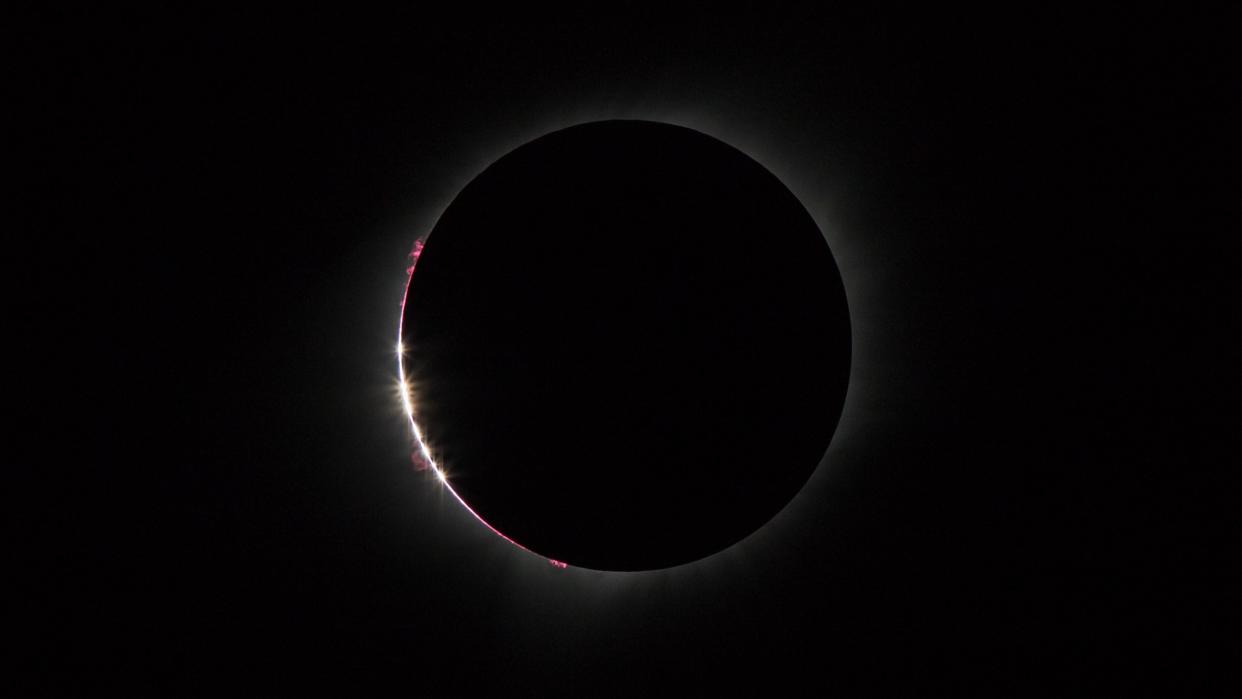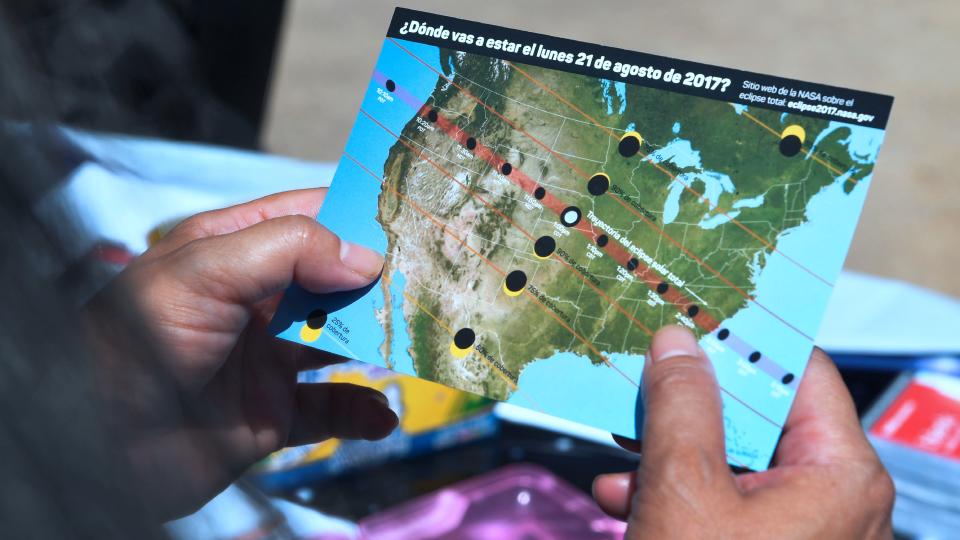The 2024 total solar eclipse is 1 week away. Here's what you need to know.

There's only one week left until the total solar eclipse 2024 is visible across North America! Are you ready?
Memories will be made when the moon crosses in front of the sun and turns the daytime sky dark. The total solar eclipse will travel through Mexico, 15 U.S. States and Canada and will be one of the most-watched eclipses ever. You can view the entire path of totality including start and end times for different stages of the solar ellipse at each location in this helpful interactive map from NASA.
If you cannot watch the eclipse in person you can watch the total solar eclipse live here on Space.com courtesy of NASA. Coverage will begin at 1 p.m. EDT (1700 GMT). You can also keep up with all the actions with our total solar eclipse 2024 live updates blog.
And if you capture a great photo of the solar eclipse and would like to share it with us and our readers, please email it to spacephotos@space.com.
Related: Solar eclipse viewing through history: A roundup of some of the best photos
Last minute preparations
Are you lost when it comes to eclipse maps?

Our how to read and understand a solar eclipse map will help you get the most out of your eclipse viewing venture!
By now you've most likely decided on a viewing location and have all the supplies needed for a successful eclipse viewing experience (don't forget those eclipse glasses!).
But if you're still scrambling for some solar-safe viewing equipment and haven't been able to get hold of a pair of eclipse glasses don't worry, we've got some alternative ways to view the eclipse with items from around the home.
If you're looking for a way to entertain the little ones before, during and after the eclipse we've got a great guide on how to organize an eclipse event for kids.
Eclipse weather
As we get closer to April 8, more reliable meteorological weather forecasts will become available. NOAA's Weather Prediction Center is a great place to find increasingly reliable forecasts, which can help you decide on a viewing location where the probability of cloud cover is low.
While we are all wishing for clear skies, we can't help but wonder how clouds could impact the viewing experience. It turns out a cloudy forecast might not be as bad as you would initially think, as it all depends on the type, thickness and extent of the cloud cover. You can read more about what happens if it's cloudy during the eclipse and how to give yourself the best chance of clear skies in our helpful guides
Safety
With so many people flocking to watch the eclipse safety is the top priority. Here we've compiled a couple of guides on How to stay safe during the eclipse and also how to avoid getting stuck in traffic on the big day.
Everyone observing the partial phases of this eclipse — and for those outside the path of totality, that's the entire event — will need to wear solar eclipse glasses while cameras, telescopes and binoculars will need solar filters placed in front of their lenses.
Only those in the path of totality will be able to remove them briefly to see the sun's corona with their naked eyes. Those not in the path of totality must keep them on the entire time. Our how to observe the sun safely guide tells you everything you need to know about safe solar observations.
Solar eclipse glasses are crucial for most to safely observe the eclipse, but with such high demand for the vital piece of kit, fake eclipse glasses are rife. The American Astronomical Society (AAS) is warning people about the risks of counterfeit and knock-off solar glasses so we have come up with a guide to how to check yours are safe.

